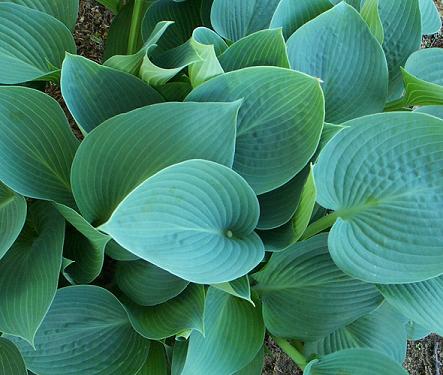|
Gardening Advice
Gardening Advice Response: Your question prompted a new page on the GQnE website: Large Leaf Hosta. This new page lists some of the more popular large leaf hostas you might see. Along with these popular hostas, here are even more large leaf hostas you might be interested in: 'Blue Mammoth', 'Blue Umbrellas', 'Edge of Night', 'Green Wedge', 'Guardian Angel', 'Hercules', 'Komodo Dragon', 'Jade Cascade', 'Liberty', h. montana 'Aureomarginata', h. nigrescens 'Elatior', 'Sum of All', 'Titanic', 'Victory', and 'Winter Snow'.
Carol from Zone 3 asks: What kind of plants attract hummingbirds? Gardening Advice Response: Enjoying flower nectar alone is not enough though. Hummingbirds also need to feed on insects to complete their natural diets. They need cover for perching and/or nesting, too. Trees or shrubs can provide both insects and cover for these beauties. Cover plants should be as tall as possible and might include Azalea, Butterfly bush, Honeysuckle, and/or Weigela. In addition to the flowers, trees and shrubs, you might consider providing the hummingbirds with a feeder for when the blossoms are unavailable to get their nectar. When choosing a feeder, look for ones with upward-facing nectar ports that have perches also if possible. Rita from Zone 6 asks: Gardening Advice Response: If you’re ready to plant them now, check the plant care tag for your tulips. Be sure you are within the planting time for your hardiness zone. Water them well in their pots and set them in a protected area that is cold, yet above freezing, for a few days to acclimate the plants to the temperature change from in-store to in-ground. Once in the ground, the tulips should be able to withstand the weather. Some additional information about transplanting blooming tulips…I’ve had mixed success when transplanting spring purchased, blooming tulips into the garden. Some have come up again the next year and some have taken me completely by surprise when they skip a year and come up the year after. Sadly though, there’s about a 50/50 chance that most will become fertilizer for the soil. To give them the best chance to come up next year, choose an area in the garden that receives full sun and will remain hot and dry during the rest of the season. Keep the foliage alive as long as possible once they’ve been transplanted so that the bulbs can have a chance to replenish their energy. Be sure to mark the location of the tulips being careful to avoid hitting or damaging the bulbs. When the foliage has naturally and completely died back, cut off the stalks and allow the area to stay as dry as possible; rain is okay, just avoid intentionally watering the area. Be aware that if you plan to put other plants overtop of the tulips, the additional moisture needed during the season to keep these other plants healthy may be detrimental for the tulips. Because of the excess moisture, you may see fewer and fewer tulip blooms until they simply disappear altogether. Robin from Zone 5 suggests: Gardening Advice Response: Eileen from Zone 7 asks: Gardening Advice Response: Half-hardy annuals will stand some cold but won't survive a heavy frost. The seed doesn't survive outside over the winter period. Typically, half-hardy annuals require a longer period of growth in order to germinate, grow, flower, and die in one season. Usually started indoors, they should be planted in the ground only after all chance of frost has passed. Petunia and Snapdragon are considered Half-hardy annuals. Half-hardy perennials are usually grown and treated as annuals. Some are discarded when a hard frost occurs, others can be lifted before a frost, repotted and taken indoors for the winter, and some others need their root structures lifted and stored in a dry, cool location over the winter. Some half-hardy perennials would be Dahlia and Tuberous Begonia. Faye from Zone 10 (almost 11) asks: Gardening Advice Response: Another suggestion would be Azaleas if you want to try a bush. The pink Encore Azalea® Autumn Belle™ PPAF or the white Encore Azalea® Autumn Moonlight™ PPAF show good in USDA Zones 7-10. Related Articles
|



